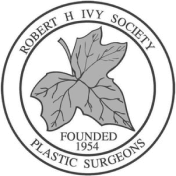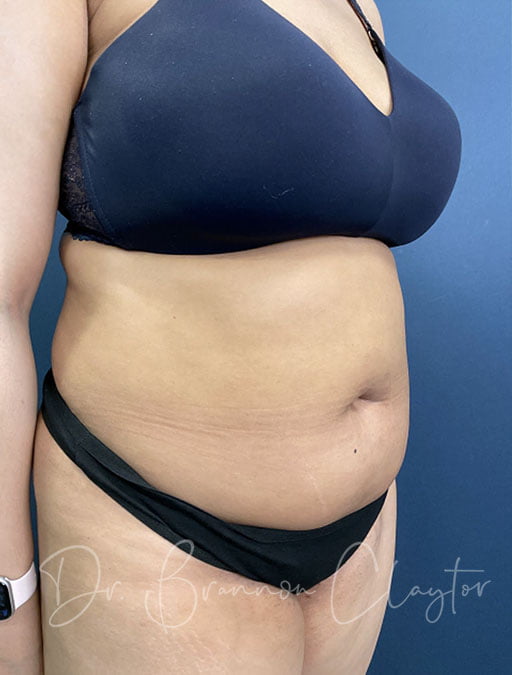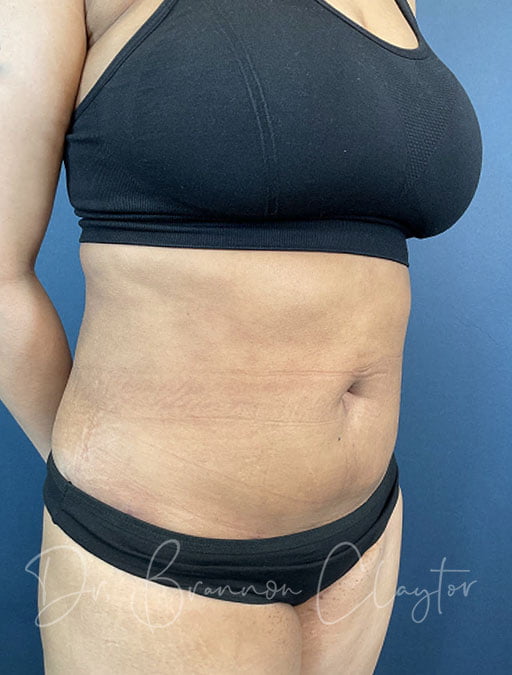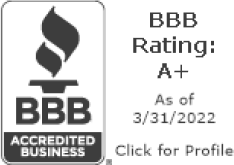Liposuction (Lipoplasty)
What is liposuction?
Liposuction is a cosmetic surgical procedure designed to remove excess or unwanted fat from specific areas of the body.
There are several different names for liposuction including lipoplasty, lipolysis, liposculpture, liposculpting and simply “lipo.” In general, all of these imply fat reduction or fat removal surgery.
Liposuction is one of the most popular cosmetic procedures in the United States and here at our plastic surgery clinic in Philadelphia. Although it is often a common procedure for females, male liposuction is becoming an increasing choice, especially in our image-driven society.
Dr. R. Brannon Claytor
Dr. Claytor is board certified by the American Board of Plastic Surgery and holds over 20 years of experience as a cosmetic plastic surgeon. An innovator and teacher in the field of plastic surgery, he uses advanced techniques like the drain-free tummy tuck and deep plane facelift to streamline recovery and provide natural-looking, durable results.




On what areas of the body can liposuction be performed?
Liposuction is most commonly performed on the stomach, abdomen, chest, flanks, neck and chin. It can also treat the following:
- Upper arms
- Cheeks
- Back
- Thighs
- Knees
- Calves
- Buttocks
- Hips
- Ankles
What are the benefits of lipo?
Liposuction can help male and females remove stubborn areas of fat that hinder their appearance and keep them from achieving the youthful, toned look they desire.
This procedure removes fat by suctioning it out, leaving patients with a slimmer, sculpted appearance. Treated areas look slimmer and more contoured, and in better overall proportion to the rest of the body.
However, liposuction is not a method for losing weight and is not effective in eliminating cellulite or tightening loose and sagging skin.


This 28-year-old patient is shown 1-month post-op Smart Liposuction of the abdomen and flanks.
*Individual results may vary
Am I a candidate for liposuction surgery?
The ideal candidate for liposuction is in good overall health but has one or more areas of fat that do not respond to diet or exercise.
What is a lipo procedure like?
Liposuction is a minimally invasive cosmetic procedure that uses a thin, hollow tube called a cannula to remove localized areas of body fat. The cannula is inserted through extremely small incisions and then moved back and forth to loosen excess fat, which is suctioned out using a vacuum or a cannula-attached syringe.
Video Transcript
I’m Dr. Brannon Claytor, board-certified plastic surgeon. I’d like to talk to you about the tummy tuck operation with concomitant liposuction. Here the suction areas are marked on the abdomen to ensure and maximize abdominal contours and definition. The tumescent fluid is injected into the abdomen, and then the liposuction is performed. You can see here the fat being withdrawn, which is allowing for the skin to be contracted. The red and blue represent blood vessels. Suction area 4 is the abdominoplasty portion to be removed. The central area is dissected down to the rectus fascia; laterally, the scarpa’s fascia is left intact to allow for lymphatic drainage. The upper flap is elevated up to the level of the xiphoid. Additional liposuction of the upper flap is performed. Cross sectional analysis of this demonstrates reduction of the fat in this area with protection of the blood vessels to improve wound healing. The rectus diastasis is repaired with sutures. If the scarpa’s fascia is still full on the inferior aspect, additional liposuction can be performed to de-bulk this area and minimize the contours. The green areas represent the intact lymphatics that are left in scarpa’s fascia. Excess scarpa’s fascia is excised superiorly to improve abdominal contour. The flap is advanced to closure and the umbilicus is delivered and inset. This has been a demonstration of tummy tuck with concomitant liposuction. I’m Dr. Brannon Claytor, board-certified plastic surgeon. I hope you found this 3D animation helpful as you explore your options for abdominal rejuvenation.
What different liposuction techniques are available?
Dr. Claytor uses a range of liposuction methods, including tumescent liposuction and SmartLipo®.
Tumescent Liposuction
One of the most common liposuction techniques is tumescent liposuction, which may get an assist from ultrasound or laser technology. It is performed on an outpatient basis. During tumescent liposuction, an injection comprising of saline solution, lidocaine (an anesthetic) and epinephrine (a blood-vessel contractor) goes into the treatment area. Then, the solution causes the targeted tissue to swell and become firm, which makes it easier to remove via the cannula.
SmartLipo®
In laser-assisted tumescent liposuction, or SmartLipo®, a laser is used to liquefy the fat, which makes removing it easier. SmartLipo still involves making small incisions in the skin and suctioning it out of the body however the laser has the added benefit of tightening the treatment-area skin after fat is removed. Dr. Claytor can perform the procedure in his QuadA Accredited Surgical Facility conveniently located in Bryn Mawr just outside of Philadelphia.
“Since my first consultation, Dr. Claytor and his staff have been been awesome. I had a previous tummy tuck by another doctor with less than desirable results. Dr. Claytor listened to my concerns and recommended how he could give me the outcome I wanted. He has gone out of his way to ensure that I am happy with the results. He is in the process of tweeking and putting the finishing touches on my surgery by doing sculpting. It’s great to have a doctor who cares so much about his patients.”
What is the difference between traditional liposuction and SmartLipo®?
SmartLipo and traditional liposuction are both popular fat removal procedures. However, there are some key differences between the two.
Traditional tumescent liposuction is slightly more invasive, so it is typically performed under general anesthesia and requires a longer recovery time compared to SmartLipo. The advantages to this technique are that the anesthetic is built-in, so there is no need for general or IV sedation, and blood loss reduces because the epinephrine constricts blood vessels.
SmartLipo, on the other hand, can be performed under local anesthesia and generally has a shorter recovery time compared to traditional liposuction. Another difference is that SmartLipo can also stimulate collagen production, leading to firmer and smoother skin in the treated area which can make it a preferred option for patients who want to improve the appearance of sagging or loose skin in addition to removing excess fat.
The best option for each individual patient depends on their specific needs and aesthetic goals, as well as the recommendation of a qualified and experienced aesthetic surgeon in Philadelphia like Dr. Brannon Claytor. A consultation with our practice can help determine which procedure is best for you.
Listen to this patient’s experience with SmartLipoListen to more patent stories »
Can I combine liposuction with other cosmetic procedures?
Liposuction surgery can be performed alone or in conjunction with other body contouring procedures, such as thigh lift and abdominoplasty. For mothers, liposuction is also often included in a full mommy makeover—a customized set of procedures, such as breast surgery and a tummy tuck—that restores your pre-pregnancy shape.
Liposuction may also be effective in supporting some breast procedures. Female breast reduction surgery may be combined with liposuction to remove excess fatty tissue from the sides of the breasts or the underarm area to improve the overall appearance of the breast.
It is also effective for treating gynecomastia, an enlargement of the male breast tissue from hormonal imbalance, commonly referred to as “man boobs.” Breast reduction surgery can treat this common condition, but lipo often offers the same effective results with minimal downtime and practically no visible scarring. Many men with gynecomastia only have a small amount of fat tissue that requires removal and can usually benefit from liposuction surgery.
A consultation at our practice can help determine the best course of treatment for each individual case.
Video Transcript
Welcome to Noone Plastic Surgery. I’m Dr. Claytor, and I’d like to talk with you about the abdominoplasty procedure. This is also known as the tummy tuck operation. This operation can frequently be combined with liposuction and can aid in the sculpting and shaping of the abdomen. The operation involves removing excess skin and tightening the rectus muscles.
These muscles are frequently pulled apart during pregnancy and can often result in an abdominal bulge. This is a condition that cannot be corrected with diet and exercise. The operation takes advantage of recent advances in the better understanding of the abdominal wall, preserving the body’s own internal drainage system. By doing so, in select patients, no drains are needed for the post-operative period. This is beneficial for patients as it improves their post-operative comfort.
The operation is performed at the hospital and usually lasts one to two hours. Depending on your activity level before surgery, you will likely be back to your full activities within a month and back to light activities within one week.
What is recovery from liposuction surgery like?
After lipo, patients experience mild swelling, bruising and discomfort in the treated area. Compression garments or elastic bandages can help reduce these symptoms as the area heals. Patients can return to work and other regular activities as soon as they feel comfortable, which is usually after a few days. The patient should avoid exercise and other strenuous activities for a few weeks.
What results should I expect after liposuction?
Results of the liposuction procedure may not be apparent until swelling and bruising subside, which usually takes a week; swelling should completely subside within a few months. Incisions are rarely sutured, and scarring is almost nonexistent because the incisions used for the cannula are so small. The results of liposuction are long-lasting unless the patient gains a substantial amount of weight.
- Key Benefits
- Glossary
- Spot-reduction of stubborn fat: Liposuction surgically removes excess fat deposits in areas that are resistant to diet and exercise.
- Improved body proportions: It can enhance body proportions by artfully sculpting certain areas.
- Complementary to lifts and other procedures: Lipo can be combined with other cosmetic surgeries that remove excess skin, or used in a fat transfer procedure to enhance the face or breasts.
Aspiration: The process of removing fat through a suction device during liposuction.
Anesthesia: Medication used to prevent pain during the procedure; can be general or local.
Cannula: A small, thin tube used to break up and suction out fat deposits.
Capillary: Small blood vessels where oxygen exchange occurs.
Cellulite: A condition where the skin appears dimpled and lumpy due to the underlying fat pushing against connective tissue, commonly found on thighs and buttocks.
Compression Garments: Special clothing worn after surgery to minimize swelling and support healing tissues.
Contour Irregularities: Unwanted waves or bumps in the skin’s surface following liposuction.
Elastin: A protein in connective tissue that allows the skin to resume its shape after stretching or contracting.
Hematoma: A collection of blood outside of a blood vessel, which may occur after surgery.
Incision: A cut made in the skin to perform the liposuction procedure.
Infiltration: The process of injecting fluid into the tissues to facilitate fat removal.
Lidocaine: A local anesthetic commonly used during liposuction to numb the treatment area.
Lipoplasty: Another term for liposuction.
Seroma: An accumulation of serous fluid that may occur where tissue has been removed.
Sutures: Stitches used to close incisions after the procedure.
Tumescent Liposuction: A technique where a large volume of diluted local anesthetic is injected into the fat, making the area swollen and firm before removal.
VASER Liposuction: A type of ultrasonic liposuction that uses sound waves to liquefy fat before it’s removed.
Visceral Fat: Fat that is stored within the abdominal cavity, not addressed by liposuction.
Does liposuction require anesthesia?
Liposuction requires some form of anesthesia, although the method used will depend on the extent of the procedure and the preferences of the surgeon and patient.
General anesthesia is often used for liposuction surgery, which involves the patient being put to sleep with sedation medication, so they are completely unconscious during the procedure.
For SmartLipo or smaller-scale liposuction procedures (i.e. for a small tummy pooch), local anesthesia with or without sedation may be used. This involves the injection of numbing medication into the treatment area to numb the area and minimize discomfort during the procedure. Sedation medication may also be administered to help you feel relaxed and comfortable during the procedure.
Regardless of the type of anesthesia used, rest assured that at Claytor Noone Plastic Surgery it will be administered by board-certified plastic surgeon in an accredited surgical facility with appropriate safety measures in place. Dr. Claytor and his team will work together to determine the best type of anesthesia for you based on your medical history, the extent of the procedure, and other factors.
Why choose Dr. Claytor for your plastic surgeon?
Double Board-Certified for a high level of safety and precision
Chief of Plastic Surgery at Main Line Health, a top health system
Board Member of The Aesthetic Society, shaping the future of aesthetics
8x Philadelphia Magazine Top Doctor for exceptional patient care
Recognized as one of America’s Best Plastic Surgeons by Newsweek
Drain-free recovery expert for faster, more comfortable healing
Deep plane facelift innovator and global educator
Active researcher in surgical and non-surgical aesthetic advancements
Highly regarded for his surgical expertise and outcomes, as well as his dedicated follow-up care





Are there risks associated with liposuction?
In addition to the usual risks associated with plastic surgery, risks with lipo include the following:
- Loose or rippled skin
- Worsening of cellulite
- Asymmetry
- Contour irregularities
- Pigmentation irregularities
If Dr. Claytor removes a large amount of fat, then additional surgery to remove excess skin may be necessary.
“The experience with Dr. Claytor has been nothing but excellent – both the people and the results.”
How much does liposuction cost?
The total cost of a liposuction procedure will depend on several factors, including your body’s personal needs and the specific goals you would like to achieve. It will also include three different fees which vary based on the procedure: the surgeon’s fee, the hospital or surgery center fee, and the anesthesia fee.
Our practice is happy to discuss these surgical costs with you, as well as options for convenient financing.
Refer a Friend, Earn Rewards
Earn credits each time you refer a friend to Claytor Noone Plastic Surgery: $250 toward surgery, or $25 toward med spa procedures!* It’s the easiest way to save on your next treatment or procedure with us.
Ask us how to get started!
*Savings for surgical procedures are applied after the procedure has been performed.
Voted Top Doctor in Philadelphia Magazine, Dr. Brannon Claytor is an expert surgeon continuously involved in researching the best liposuction practices for men and women. To learn more, check out Dr. Claytor’s before & after photo gallery for liposuction or SmartLipo, or schedule a personal consultation with him by calling (610) 527-4833.
We look forward to meeting your aesthetic needs and helping you look and feel you best. Our plastic surgery practice serves patients from Philadelphia, Bryn Mawr, the Main Line and surrounding areas.
References »
Bellini E, Grieco MP, Raposio E. A journey through liposuction and liposculture: Review. Annals of Medicine and Surgery. 2017 Nov 6;24:53-60. doi: 10.1016/j.amsu.2017.10.024.
Yoshida S, Koshima I, Imai H, Roh S, Mese T, Uchiki T, Sasaki A, Nagamatsu S. Effect of Postoperative Compression Therapy on the Success of Liposuction in Patients with Advanced Lower Limb Lymphedema. Journal of Clinical Medicine. 2021 Oct 22;10(21):4852. doi: 10.3390/jcm10214852.
Shridharani SM, Broyles JM, Matarasso A. Liposuction devices: technology update. Medical devices (Auckland, NZ). 2014 Jul 21;7:241-51. doi: 10.2147/MDER.S47322.
Wu S, Coombs DM, Gurunian R. Liposuction: Concepts, safety, and techniques in body-contouring surgery. Cleveland Clinic Journal of Medicine. 2020 Jun;87(6):367-375. doi: 10.3949/ccjm.87a.19097.
Areas Served:

Medically reviewed by Dr. R. Brannon Claytor — Updated on Apr 3, 2025


